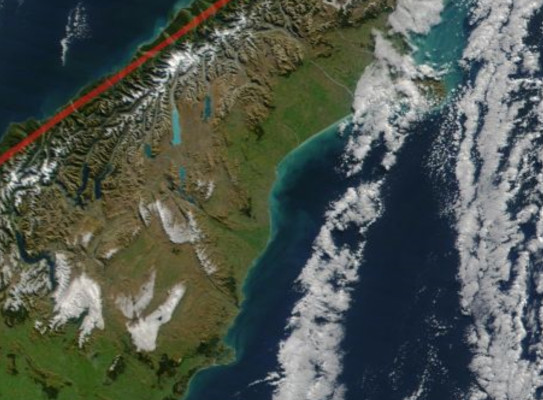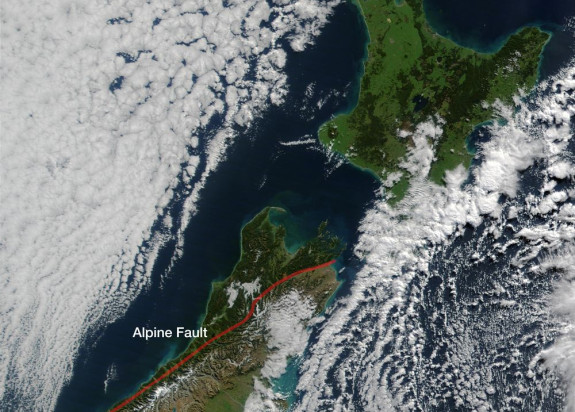Research finds Alpine Fault quake more likely in the next 50 years

The Alpine Fault represents a major earthquake threat to the South Island and recent scientific findings have helped to refine the nature of that threat. One of those findings puts the chance of a major quake on the fault at 75 percent in the next 50 years, compared to the previously estimated figure of 29 percent.
The study, led by Te Herenga Waka—Victoria University of Wellington with support from earthquake geologists at GNS Science, combined results from extensive fieldwork with sophisticated computer modelling to assess the chances of an earthquake occurring before 2068.
Study co-author, Rob Langridge of GNS Science, says the research does not change the likely impacts and consequences of a quake on the Alpine Fault.
Scientists have been studying the Alpine Fault for decades, and this study gives us a more precise picture of the likelihood of an earthquake – and how the fault might behave. Communities throughout the South Island, and especially on the West Coast, have been preparing for an Alpine Fault earthquake through initiatives such as the AF8 programme(external link).


As the next rupture will almost certainly happen within many of our lifetimes, these education and awareness initiatives are now more important than ever
The recently published study includes analysis of sediments recovered from four lakes along the Alpine Fault and combines this with work undertaken by GNS Science in Fiordland that identified 27 ruptures of the fault going back 8000 years.
The study also incorporates a physics-based 4D model of the entire fault and simulates up to 100,000 years of fault activity, calibrated against evidence of actual ruptures going back several thousand years.
Dr Langridge says the simulations show that the fault has two main rupture modes through time.
“One mode is where the central section of the fault ruptures independently of the southern section in Fiordland. In the other mode, the two sections rupture together and pass through an ‘earthquake gate’ on the fault south of Jackson Bay – growing to a magnitude of 8 or more.”
The last three earthquakes on the Alpine Fault passed through this gate – increasing the likelihood the next one will too.
“Modelling indicates that when there has been a run of these ruptures that pass through the gate, the next one is likely to do the same.”
The earthquake of 1717 produced a rupture of about 380km on the fault, and study concludes there is an 82 percent chance that the next rupture could be similar.
Variations in rupture behaviour along the length of the fault are not a huge surprise to scientists.
“The dominant message in the past two decades, reinforced by this recent study, is that the Alpine Fault produces an earthquake of about magnitude 8 every 300 years or so. This study is yet another reminder that we live in a geologically active country and it pays to be prepared on a personal, community, and business level.”
In addition to GNS Science and Victoria University of Wellington, scientists from the University of Otago, the University of California, and the United States Geological Survey also contributed to the study. It was funded by EQC and the Rutherford Foundation.